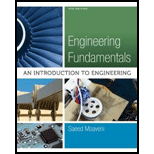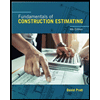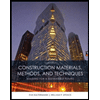
Explain some of the engineering achievements that one couldn’t do without today.
Explanation of Solution
Followings are the list that include some of the engineering achievements that one couldn’t do without today,
- 1. Electricity.
- 2. Electronics.
- 3. Internet.
- 4. Water supply and Distribution.
- 5. Agricultural Mechanization.
1. Electricity:
Electricity acts as a midst of the transformation process as a technology and innovative disrupt model from generation to beyond the meter. It is a physical phenomenon that is associated with the motion and presence of the matter which has electric charge property.
Electrification is defined as the process of charging the device or material using electricity. Nowadays, electrification has improved and developed the people lives around the world. In ancient days, people used kerosene lamps and candles in order to light their homes. With the advanced and linear development of technology towards electricity, the great changes have taken place. The electricity should be generated initially, and it is transmitted and used by the customers.
Generators are used to produce the electric current. Following are the list of some sources used in the generators:
- Water.
- Wind.
- Nuclear.
- Fossil fuels.
Along with the technology development, the reliability, safety measures, efficiency of machineries in generators are also developed. The electricity is supplied to the followings very easily:
- 1. Home.
- 2. Organizations.
- 3. Industries etc.
2. Electronics:
Electronics mainly deals with the emission and flow of electrons and control of the vacuum, matter and comprises of different applications including physics, engineering and technology etc. The ability which is used to control the flow of electrons can be applied to the device control and information handling methodologies.
The electronic systems uses highly integrated elements which includes the physical and functional characteristics. The best technology achievement held in electronics is mobile phone. Highly modernized handheld cellphone is developed which is evolved as mobile phone from a large box in the car trunk. Current electronic devices provide the following advantages:
- Compactness.
- Reliability.
- Security.
- Innovative techniques.
Development of technology towards the electronics can improve the communication processes. It has a major difference from electrical science and technology. Using the electronic devices peoples can communicate to other people from anywhere.
3. Internet:
Internet includes the following advantages:
- Capability to broadcast the information through world-wide.
- Information dissemination
mechanism. - Collaboration medium.
- Interaction element with the regard of geographic location.
Internet is the best example to showcase the research and development of the information infrastructure. The development of internet includes multiple aspects such as,
- Technological aspect.
- Organizational aspect.
- Community.
The widespread information infrastructure is the trending internet, which is not only influences the technical aspects of computer communications but also gives multiple advantages to the society by serving,
- As a tool to accomplish the electronic commerce.
- Information acquisition.
- Community operations.
In order to link the devices world-wide, internet uses IP suite (i.e.) Internet protocol suite. Internet is a network of networks includes private and public sectors, organizations and the link is provided using wireless, optical networking and electronic technologies.
4. Water supply and Distribution:
Water supply is highly mandatory and it is the provision of water by,
- Public usages.
- Public and Private sectors.
- Commercial organizations.
In ancient days, water is the main thing which has great demand and fear. As the population increases, the water scarcity arises and the cities across the nation were clamoring more for water. Such problems causes more health problems to people and lead to death.
The technology development towards the water supply and distribution solved the problem by supplying water to each and every home using underground water supply system. Such an availability of abundant water and necessary safety measures to prevent living things from the waterborne diseases changes the lives of people linearly.
5. Agricultural Mechanization:
Most of the advancement techniques in agricultural mechanization have been found in 20th century. Agricultural mechanization is the process in which agricultural machineries is used to process the agriculture work, and to increase the productivity for farmers. In upcoming modern techniques have replaced many form jobs as powered machineries. Such machineries can be used to work instead of labors and working animals namely oxen and mules.
The agricultural mechanization process used for the promotion of massive shift from the rural life to urban life in the developed countries with multiple benefits namely,
- Changes in the nature of work.
- Consumer economy.
- Role of women in society.
- Nature and status of an individual families.
The term mechanization is one of the major factors which is highly responsible for urbanization and economy of organizations and industries. Such mechanization process can provide the good quality in farm and encourage the large scale production.
Therefore, some of the engineering achievements that one couldn’t do without today have been explained.
Conclusion:
Thus, some of the engineering achievements that one couldn’t do without today have been explained.
Want to see more full solutions like this?
Chapter 1 Solutions
Engineering Fundamentals: An Introduction to Engineering (MindTap Course List)
- For question 2 do 2% please. Use El centro spectrum to answer the secon question please. Thank you for your help!arrow_forwardsolve pleasearrow_forwardA mechanism for pushing small boxes from an assembly line onto a conveyor belt is shown with arm OD and crank CB in their vertical positions. For the configuration shown, crank CB has a constant clockwise angular velocity of 0.6π rad/s. Determine the acceleration QE of E (positive if to the right, negative if down). 450 mm 215 mm 565 mm A 185 mm 105 mm 110185. mm mm Answer: a = i B 40 mm E m/s²arrow_forward
- Please answer the following questions in the picture, use the second picture to answer some of the questions. I appreciate your help! Explain step by step, thank you!arrow_forwardQuestion 5. Three pipes A, B, and C are interconnected as in Fig. 2. The pipe characteristics are given below. Find the rate at which water will flow in each pipe. Find also the pressure at point P. (Neglect minor losses) Pipe D (in) L (ft) f A 6 2000 0.020 B 4 1600 0.032 C 8 3000 0.02 -El. 200 ft P -El. 120 ft B Fig. 2 -El. 50 ft.arrow_forwardcalculate all nodal displacementts and all the member forces of the trussarrow_forward
- NOTE: Use areal methods only for V,M,N diagrams(Do NOT use the equations) (also draw the N diagram(s) for the entire structure)arrow_forwardThe figure below shows a foundation of 10 ft x 6.25 ft resting on a sand deposit. The net load per unit area at the level of the foundation, qo, is 2100 lb/ft². For the sand, μs = 0.3, E, = 3200 lb/in.², Dƒ = 2.5 ft, and H = 32 ft. Foundation BX L Rigid foundation settlement Flexible foundation settlement H μ, Poisson's ratio E, = Modulus of elasticity Soil Rock Elastic settlement of flexible and rigid foundations Table 1 Variation of F₁ with m' and n' m' n' 1.0 1.2 1.4 1.6 1.8 2.0 2.5 3.0 0.25 0.014 0.013 0.012 0.011 0.011 0.011 0.010 0.010 0.50 0.049 0.046 0.044 0.042 0.041 0.040 0.038 0.038 1.00 0.142 0.138 0.134 0.130 0.127 0.125 0.121 0.118 2.00 0.285 0.290 0.292 0.292 0.291 0.289 0.284 0.279 5.00 0.437 0.465 0.487 0.503 0.516 0.526 0.543 0.551 10.00 0.498 0.537 0.570 0.597 0.621 0.641 0.679 0.707 20.00 0.529 0.575 0.614 0.647 0.677 0.702 0.756 0.797 50.00 0.548 0.598 0.640 0.678 0.711 0.740 0.803 0.853 100.00 0.555 0.605 0.649 0.688 0.722 0.753 0.819 0.872 Table 2 Variation of F2…arrow_forward= == An 8 m high retaining wall supports a 5.5 m deep sand (Ya 18.5 kN/m³, q = 34°) overlying a saturated sandy clay (y_sat = 20.3 kN/m³, q = 28°, c = 17 kPa). The groundwater level is located at the interface of two layers. Sketch the lateral stress distribution up to a depth of 8 m for an active condition. Also, determine the line of action of the resultant. 5.5 m Sand |Y=18.5 kN/m³ |₁ =34° Sandy : clay 2.5 m |c=17 kPa Ysat 20.3 kN/m³ 2=28°arrow_forward
- 3. What is the maximum allowable load that can be applied to the pile shown below? : Qall = ? G.W.T. 45' Soft Clay: Ysat 100 pcf Cu = 500 psf, ou = 0° Clay Shale: Qu(lab) 24,000 psi o' = 15° Driven Steel H-Pile: 1/2" thick steel web & flanges (soil plugged) -10". I Note: Pile & soil profile are not drawn to scale Please use the approach outlined in Das 12.16 and an Allowable Stress Design (ASD) approach for your analysis. Use a factor of safety = 3 for design, neglect any effect that shaft resistance has on pile capacity, and neglect the effect of the weight of the pile in your analysis.arrow_forward2. Calculate the ultimate load carrying capacity of the pile tip driven into the soil profile shown below: G.W.T. Qapp 40' Soft Clay: Ysat 100 pcf Cu 500 psf, ₁ = 0° 4c+4 Poorly Graded Sand (SP): Ysat = 125 pcf Q₁ = ? c' = 0, ' = 35° Driven Steel Pipe Pile: Outside Diameter = 2' Inside Diameter = 1'11" Hollow (soil plugged) Note: Pile & soil profile are not drawn to scale For this problem, please calculate N₁* using both the bearing capacity theory approach and using standard design charts. Compare the values that result from these two approaches. Please use only the Nq* from bearing capacity theory for the remainder of your calculations.arrow_forwardDesign a fully restrained BFP moment connection to support the factored bending moment of 1,200 kN·m and factored shear force of 95 kN due to wind and gravity loads. Use 90mm spacing between the bolts, and 40mm edge spacing. The steel grade is A992 for the W920 × 201 beam and W840 × 359 column and A36 for the steel plate (30 mm thick). Use FEXX = 450 MPa electrodes and 20mm A490 bolts (threads included) for the flange plate (Fr= 457 MPa), 16mm A307 bolts for the shear tab (Fnv = 165 MPa). Steel Section Properties W920 × 201 W840 × 359 D₁ = 904 mm bf = 305 mm tf = 20.1 mm tw = 15.2 mm d = 869 mm bf = 404 mm tf = 35.6 mm tw = 21.1 mm Summary of answer: Flange Plate: bPL = tPL = No. of Bolts: Flange bolt = Thickness of fillet weld on shear tab:. Shear tab =arrow_forward
 Engineering Fundamentals: An Introduction to Engi...Civil EngineeringISBN:9781305084766Author:Saeed MoaveniPublisher:Cengage Learning
Engineering Fundamentals: An Introduction to Engi...Civil EngineeringISBN:9781305084766Author:Saeed MoaveniPublisher:Cengage Learning Fundamentals Of Construction EstimatingCivil EngineeringISBN:9781337399395Author:Pratt, David J.Publisher:Cengage,
Fundamentals Of Construction EstimatingCivil EngineeringISBN:9781337399395Author:Pratt, David J.Publisher:Cengage, Construction Materials, Methods and Techniques (M...Civil EngineeringISBN:9781305086272Author:William P. Spence, Eva KultermannPublisher:Cengage Learning
Construction Materials, Methods and Techniques (M...Civil EngineeringISBN:9781305086272Author:William P. Spence, Eva KultermannPublisher:Cengage Learning


